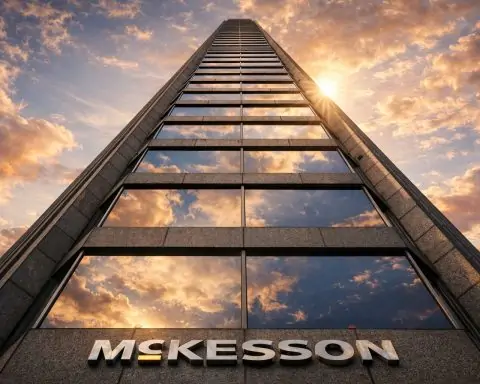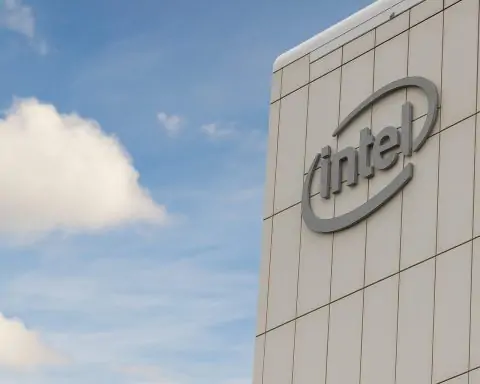Key Facts
- US Tightens Chip Curbs: Washington revoked exemptions allowing Samsung and SK Hynix to import advanced U.S. chipmaking gear into China, sending their shares tumbling [1] [2]. South Korea’s SK Hynix called the move “difficult” and pledged to work with U.S. and Korean authorities to “minimise the impact” [3] [4].
- Australia’s Teen Social Media Ban Scrutinized: A government trial of face-recognition age verification software found “unacceptable” error rates for some groups ahead of Australia’s December ban on under-16s using social media [5] [6]. Experts warn the tech may not be ready, calling the accuracy “concerning…with the tight schedule for introduction” [7].
- India Bans Paid Gaming – Industry Reels: India outlawed online pay-to-play games (fantasy sports, poker, rummy) over addiction and debt fears, instantly gutting a booming $3+ billion industry [8] [9]. Mobile Premier League (MPL), a leading gaming app, will fire 60% of its Indian staff (~300 people) and shift focus abroad as it loses “50% of…revenues” overnight [10] [11].
- Eric Trump Boosts Bitcoin in Tokyo: President Donald Trump’s son Eric appeared at a Tokyo meeting of Metaplanet, a Japanese crypto firm, praising its CEO as a visionary in digital assets [12] [13]. He joined Metaplanet’s board in March, and shareholders just approved a ¥130 billion ($884M) plan to issue new stock to buy more Bitcoin [14] [15].
- Global Telecoms & 6G Advances: A “software issue” knocked out wireless service for tens of thousands of Verizon customers across the U.S. on Saturday, leaving phones stuck in SOS mode until engineers rushed fixes [16] [17]. In China, scientists unveiled a breakthrough 6G chip delivering 100 Gbps speeds across all frequencies – enough to beam a 50GB 8K movie in seconds – aiming to 5,000× boost rural internet speeds [18] [19].
- Cybersecurity Alerts: WhatsApp urgently patched a zero-click exploit used to install spyware on iPhones and Macs without any user interaction [20] [21]. Fewer than 200 users were targeted in the “advanced spyware campaign”, WhatsApp confirmed [22] [23]. Separately, Sophos researchers found hackers abusing Velociraptor (an open-source forensics tool) to quietly tunnel into corporate networks [24] [25], and other attackers are impersonating IT support via fake Microsoft Teams chats to steal passwords – an “active, evolving threat” exploiting employee trust [26] [27].
- Big Tech & Enterprise Moves: CrowdStrike agreed to acquire Onum, a Spanish data observability startup, in a ~$290 million deal to supercharge its cybersecurity data pipeline capabilities [28]. In a boost for semiconductor infrastructure, India’s Tessolve secured a landmark $150 million investment from TPG to expand chip testing labs and engineering centers, marking the country’s largest semiconductor services funding to date [29] [30].
- Consumer Tech & Social Media: Meta’s Ray-Ban smart glasses have emerged as a surprise hit, with over 2 million sold since launch and Q2 sales tripling year-on-year [31]. CEO Mark Zuckerberg is betting that everyday “smart eyewear” could be the next big platform, even as Meta pours $3.5 billion into a stake in Ray-Ban’s maker to solidify its lead [32] [33]. Meanwhile, TikTok is rolling out new direct messaging features – including 60-second voice notes and the ability to share photos/videos in chats – to keep Gen Z users engaged on the app [34] [35].
Consumer Technology (Hardware, Software & Gadgets)
[36] [37]Meta’s latest bet on wearable tech is paying off unexpectedly. Smart Glasses Resurgence: The social media giant’s Ray-Ban Stories smart glasses – built with eyewear maker EssilorLuxottica – have become a surprise hit, selling over 2 million units since their late-2023 debut [38]. Sales tripled in Q2 2025 alone, contributing to a 22% surge in Meta’s revenue [39]. The device, which discreetly pairs a camera and audio in stylish frames, suggests growing consumer appetite for “ambient” gadgets beyond the smartphone. “The real interface of the future is what’s sitting on your nose,” CEO Mark Zuckerberg has argued, positioning smart glasses (eventually with AR displays) as the next big platform. Meta underscored its commitment by taking a $3.5 billion stake (roughly 3%) in Ray-Ban’s parent company, cementing a long-term partnership to co-develop advanced eyewear [40].
Mobile Apps & Social: TikTok, determined to broaden its appeal beyond viral videos, is enhancing its direct messaging (DM) features. The company confirmed users will soon be able to send voice notes up to 60 seconds long and share up to nine images or videos in chats [41] [42]. These updates – rolling out over the next few weeks – bring TikTok’s messaging more in line with Instagram and WhatsApp, aiming to make the app a daily communication hub rather than just an entertainment feed. “It makes sense for TikTok to add voice notes… as a growing number of people, particularly Gen Z, are embracing the format,” TechCrunch noted [43]. For safety, TikTok will restrict strangers from sending unsolicited photos/videos and will use automated filters (like nudity detection for teens’ chats) to curb abuse [44] [45]. The move shows TikTok’s ambition to compete as a full-featured social platform – all while regulators worldwide keep a close eye on its influence.
Enterprise Technology (Cloud, B2B & Infrastructure)
Chip War Fallout: The U.S.–China tech rivalry escalated into a new semiconductor squeeze on August 31. The U.S. Commerce Department revoked special licenses that had allowed South Korea’s Samsung and SK Hynix to keep receiving U.S. chipmaking equipment for their factories in China [46]. Those one-year waivers – granted in 2022 amid sweeping U.S. export bans – had been a lifeline for the two memory giants. With the waivers gone, any advanced gear shipments will require fresh U.S. approval, complicating operations at Samsung’s NAND flash plant in Xi’an and SK Hynix’s DRAM facilities. Analysts warn the move will hinder the firms’ ability to upgrade Chinese fabs, “potentially eroding their competitiveness,” and could force costly workarounds [47]. Investors reacted swiftly: SK Hynix shares plunged 4.8% and Samsung’s fell 3% as news spread [48]. SK Hynix said it is in close talks with both Washington and Seoul and will take “necessary measures to minimise the impact on its business” [49]. Samsung, which produces a third of its NAND chips in China, has kept quiet publicly [50]. This U.S. action – giving companies 120 days to comply [51] – underscores the geopolitical risks tech firms face in global supply chains. South Korean officials are reportedly seeking assurances that chipmakers can re-export needed tools, but for now the uncertainty looms over Asia’s semiconductor sector.
Cloud & Enterprise Deals: Cybersecurity leader CrowdStrike shook up the enterprise IT scene with a significant acquisition to bolster its data capabilities. The company announced a deal to buy Onum, a Madrid-based startup specializing in real-time data pipelines, in a move valued at about $290 million [52]. Onum’s technology streams and filters huge volumes of event data in milliseconds – exactly the kind of log management and “SIEM” (security info and event management) capability CrowdStrike wants to enhance its Falcon platform. “Onum… will stream high-quality, filtered data directly into the platform to drive autonomous cybersecurity at scale,” said CrowdStrike CEO George Kurtz, touting the benefits of ingesting clean data faster [53]. (Notably, his mention of “the speed of AI” was a nod to how crucial speedy data is for AI-driven threat detection – even as this roundup omits AI developments.) By integrating Onum, CrowdStrike aims to help corporate security teams cut through noisy alerts and detect breaches more efficiently. The deal – CrowdStrike’s latest in a string of tech buyouts – highlights how data infrastructure is becoming as critical as algorithms in the enterprise software race.
Telecom & Networking: Global telecom infrastructure saw both setbacks and breakthroughs this weekend. In the U.S., Verizon suffered a nationwide outage on Saturday (Aug 30) that knocked out mobile service for customers across multiple states for hours [54]. Users from California to New York reported their phones stuck in “SOS” mode and inability to make calls. Verizon acknowledged a “software issue” in its core network and scrambled engineers to resolve it [55]. DownDetector showed over 20,000 outage reports at the peak [56]. By late Saturday, service was largely restored, but the incident underscored the fragility of telecom systems – and had many Americans reminded of their reliance on just a few wireless providers. Meanwhile in Asia, China unveiled a prototype 6G chip that could redefine wireless connectivity speeds [57]. Researchers at Peking University and City University of Hong Kong developed the world’s first “all-frequency” 6G chipset, achieving data throughput over 100 Gbps across the entire spectrum, even in bands used for rural coverage [58]. This laboratory feat (published in Nature) equates to transmitting a 50 GB 8K video in mere seconds, and could “increase service speed to 5,000 times [the] current level in rural [U.S.] areas”, the team noted [59]. The technology aims to bridge urban–rural digital divides by handling low and high frequencies on one device. While true 6G networks are years away, this breakthrough signals China’s determination to lead in post-5G wireless tech – and gives a glimpse of a future where ultra-high-bandwidth applications (like holographic telepresence or autonomous drone fleets) might actually be feasible.
Cybersecurity Incidents & Developments
[60] [61]Spyware Zero-Click Exploit: WhatsApp users on Apple devices received a stark warning on August 29: update your apps immediately. Meta’s messaging service rushed out a fix for a critical zero-click vulnerability that was being actively used to inject spyware onto iPhones and Macs [62] [63]. The attack chained a WhatsApp code bug with an unpatched flaw in Apple’s iOS/macOS image rendering, allowing hackers to compromise a device without any user action – no link clicks needed [64] [65]. Amnesty International’s Security Lab called it an “advanced spyware campaign” after examining WhatsApp’s internal alert to victims [66] [67]. In total, WhatsApp says it notified “less than 200” targeted individuals – presumably high-profile figures like activists, politicians, and journalists [68]. While WhatsApp has patched its app (CVE-2025-55177) and Apple similarly issued an emergency iOS update (CVE-2025-43300) [69], the incident is a stark reminder of the spyware-for-hire threat. It echoes the infamous Pegasus hacks; in fact, just this May a U.S. court ordered NSO Group to pay WhatsApp $167 million over its 2019 zero-click exploits [70]. Digital rights groups say this latest episode shows such attacks haven’t abated – and underscore the need for stronger defenses (and perhaps regulations) against private spyware vendors.
[71] [72]Hackers Weaponize IT Tools: Security researchers are sounding the alarm on a new trend of attackers “living off the land” – hijacking legitimate IT and security tools for nefarious ends. One recent Sophos investigation revealed hackers using Velociraptor, an open-source incident response tool, as a backdoor into a targeted network [73]. In that incident, the adversaries installed Velociraptor on a victim server and abused it to download and run other programs (like Visual Studio Code and Cloudflare’s tunneling utility) to establish stealthy remote control [74] [75]. By repurposing this trusted forensics software, the attackers could operate “without having to deploy their own malware,” effectively flying under the radar [76]. Sophos warns that any observation of Velociraptor in an environment where it’s not normally used “should be treated as a precursor to ransomware” – as the ultimate aim may be to exfiltrate data or deploy ransomware once access is solidified [77]. In a related vein, phishing attacks have leapt from email to Microsoft Teams. Cloud security firms Permiso and Hunters detailed how threat actors are impersonating IT support staff on Teams to trick employees into handing over access [78]. These scammers either compromise an organization’s Teams tenant or create a fake one, then message employees while posing as helpdesk personnel (“IT Support” with a company logo). They prompt the target to install screen-sharing or remote desktop apps (like AnyDesk or Quick Assist), effectively opening the door for the attacker to take over the machine [79] [80]. Some attacks also push a bogus “configuration update” that is actually a credential-harvesting prompt [81]. “Microsoft Teams phishing isn’t a fringe technique anymore — it’s an active, evolving threat that bypasses traditional email defenses,” researchers Alon Klayman and Tomer Kachlon warned [82]. They advise organizations to monitor internal chat logs for telltale signs (e.g. new chat sessions, suspicious file links) and educate staff that any unsolicited IT request via Teams should be verified. As workplaces rely more on chat apps, attackers are quick to follow – turning our trusted collaboration tools into the latest battleground in cybersecurity.
Telecommunications and 5G/6G
Verizon’s Nationwide Outage: One of the largest U.S. mobile carriers faced a high-profile hiccup over the weekend. On August 30, Verizon Wireless customers across the country were hit by an outage that disrupted voice calls and data service for many hours [83]. Reports of issues flooded social media by Saturday afternoon, with over 20,000 users flagging problems via downtime trackers [84]. Impacted phones often showed only “SOS” or emergency signal, indicating no network connectivity. The outage did not uniformly affect all regions – some Verizon users noticed no change – but major cities from Los Angeles to New York saw significant service gaps [85]. Verizon’s support teams confirmed the company was “aware of a software issue impacting wireless service” and that engineers were “working quickly to identify and solve the issue”, according to spokesperson Karen Schulz [86]. By Saturday night, Verizon announced service had been fully restored, though it did not immediately elaborate on the root cause beyond the vague “software issue” description. Telecom analysts noted that even a few hours’ outage can have ripple effects on businesses and emergency services; fortunately, no major incidents were attributed to the downtime. This event – coming on a holiday weekend in the U.S. – underscores the importance of network resiliency. It also gave a PR boost to Verizon’s competitors, as many T-Mobile and AT&T users cheekily thanked their stars on X (formerly Twitter) that it wasn’t their carrier this time. Verizon apologized to customers for the inconvenience and said it would “continue to monitor the situation” to ensure stability [87]. The incident may reignite discussions at the FCC about backup plans and transparency for telecom outages, especially as 5G networks add complexity to carriers’ infrastructure.
6G Tech on the Horizon: While 5G deployment is still ongoing worldwide, research labs are charging ahead toward 6G – and China appears to have scored an early symbolic win. A team of Chinese scientists announced the world’s first all-frequency 6G chip, claiming it can deliver 100 Gbps+ data speeds across any wireless band [88]. Unveiled via a study in Nature, the experimental chip is billed as “universal” because it operates from low frequencies (like those used by today’s 4G/5G and satellite links) up to extremely high terahertz bands envisioned for 6G [89]. The result is a potential game-changer for rural broadband: in theory, remote areas currently stuck with sub-20 Mbps could leap to multi-gigabit connectivity. The researchers quantified it as up to “5,000 times [faster] than current…rural US speeds” [90]. In one example given, a 50-gigabyte 8K movie file could download in under 5 seconds using the tech [91]. The chip achieves this by integrating multiple frequency modules, where traditionally each wireless standard (3 GHz mobile, 30 GHz satellite, 90 GHz radar, etc.) required separate hardware. It’s a notable engineering feat, addressing the “fragmented spectrum” problem that has plagued previous generations [92]. Of course, moving from lab demo to consumer reality is a long road – global 6G standards won’t be finalized until around 2028, and practical devices may not appear until 2030 or later. Nonetheless, this announcement feeds the narrative of a race for 6G dominance, with China keen to show technological leadership. U.S. and European researchers are working on their own 6G prototypes (with focuses on AI-powered networking and new materials for terahertz chips). For everyday people, tangible 6G benefits are distant – but the promise of near-instant wireless downloads and truly ubiquitous high-speed coverage is officially on the horizon. Keep an eye on the international 6G trials likely to ramp up in 2026–2027 as countries jockey for an edge in the next wireless revolution.
Government Regulation & Tech Policy
A high school student in Melbourne displays social media apps on her phone (Illustration) [93].
Australia’s Under-16 Social Media Ban: Australia is embarking on an aggressive experiment in online child protection – but questions are swirling about the technology behind it. Starting September 2025, social media platforms in Australia must block all users under 16 years old or face steep fines (up to A$50 million) [94]. To enforce this, the government commissioned trials of age-verification software that estimates age from a selfie. An official report released August 31 found these AI-powered checks were generally accurate but “not one-size-fits-all”. In fact, error rates for certain groups were alarmingly high [95]. Teen girls and non-Caucasian users near the age cutoff often confounded the system, which the report deemed “unacceptable” in accuracy for some demographics [96]. For example, 16-year-olds had an 8.5% chance of being misclassified as underage, requiring them to seek manual verification (like uploading an ID) [97]. Even some older adults were sometimes pegged as teens [98]. “It seems like there are a lot of variations in accuracy,” observed Dr. Justine Humphry of the University of Sydney, adding “that variation is concerning, with the tight schedule for…a system that will need to be robust” by year’s end [99]. In just three months, platforms from Meta’s Instagram to YouTube must demonstrate they’re “taking reasonable steps” to keep under-16s out [100]. The likes of Instagram are expected to deploy selfie verification or other age checks for Aussie users. Australia’s Communications Minister Michelle Rowland defended the plan, noting “many effective options” emerged in trials and insisting “user privacy can be safeguarded” [101]. However, social media firms worry about user friction and false positives, while digital rights groups warn of privacy pitfalls if ID uploads become routine. Australia will be the first Western country to attempt a blanket social media age ban. How smoothly (or not) this rolls out in December could influence similar youth online safety initiatives from the UK to California.
India’s Online Gaming Ban: A booming Indian tech sector hit a sudden regulatory wall in August as the central government outlawed online real-money games nationwide. The ban targets apps offering fantasy sports, poker, rummy, and other pay-to-play games, which officials argue were fueling gambling addictions and financial losses among youth [102] [103]. Effective immediately, any game with entry fees or monetary prizes is considered illegal. The decision – coming via an amendment to our IT Rules – blindsided the industry. Just weeks ago, startups like Dream11 and MPL (Mobile Premier League) were national success stories, attracting tens of millions of users betting small sums on cricket matches or card games. The sector was on track to reach $3.6 billion by 2029 [104] [105], with big-name investors (Tiger Global, Sequoia/Peak XV, etc.) pouring in capital. Now, that future is in doubt. Over the weekend, MPL became the first casualty, announcing a drastic downsizing. The Bengaluru-based company will lay off ~60% of its workforce in India – roughly 350 employees – as it pivots to “free-to-play” games and international markets [106] [107]. In an internal email to staff, MPL’s CEO Sai Srinivas lamented “with a heavy heart we have decided that we will be downsizing our India team significantly.” He noted that India had accounted for 50% of MPL’s revenues, revenue now disappearing virtually overnight [108]. “We will be providing those impacted with every possible support… [but] we will no longer be making any revenue from India in the near future,” the CEO wrote bluntly [109]. Rival fantasy sports platform Dream11, valued over $8 billion, faces a similar reckoning – it reportedly halted new user sign-ups and is evaluating its legal options. Startups argue their games are skill-based (choosing a fantasy cricket squad) rather than luck-based gambling, a distinction recognized by some Indian courts in the past. But Prime Minister Modi’s administration isn’t convinced, doubling down on a moral stance against “addictive” tech. The ban’s broader impact could be chilling: venture funding in India’s gaming sector may dry up, and companies could relocate or refocus abroad (MPL, for one, is aggressively expanding in the U.S.). Industry associations are lobbying New Delhi to reconsider or at least carve out exceptions (for instance, for e-sports tournaments). For now, India’s startup play-to-earn dream appears paused – a reminder that regulatory risks in emerging tech markets are very real.
Trump vs. EU Tech Rules: (No AI in this item, but noteworthy in policy) Transatlantic tensions flared late last week when former U.S. president Donald Trump issued blunt warnings about Europe’s tech regulations. In a campaign-style speech, Trump threatened retaliation against the EU’s pending Digital Services Act and Digital Markets Act – landmark laws aimed at reining in Big Tech’s power. European leaders were not amused. Over the weekend of Aug 30, officials from France and Germany jointly rejected Trump’s threats, vowing to proceed with their tech sovereignty agenda [110] [111]. “Europe will not back down from protecting its digital space,” declared French President Emmanuel Macron, according to Reuters. The EU’s new rules, which impose stricter content moderation duties (DSA) and curb anti-competitive practices by gatekeepers like Google, Meta, and Apple (DMA), are set to take effect in phases through 2024–25. Trump characterized them as unfair barriers targeting U.S. companies and suggested the U.S. might impose reciprocal measures on European firms if he were to return to power. But Germany’s digital minister brushed off the comments, stating that Europe’s tech policies are “not for sale or negotiation under external pressure.” This showdown comes as global tech governance diverges: the EU is moving aggressively on antitrust and privacy (recently hitting Meta with record fines), while a potential second Trump administration would likely take a more deregulatory, industry-friendly approach. For now it’s a war of words, since Trump holds no office – but European policymakers are signaling that even if Washington’s political winds shift, Brussels won’t blink on reigning in Big Tech.
(Note: The above item includes a development from Aug 29 as context for policy pushback. No AI-related content is included.)
Startup Funding & Tech M&A
Semiconductor Boost in India: In a bright spot amid India’s gaming crackdown, the country’s semiconductor scene got a major vote of confidence – and a large cash infusion. Tessolve, a Bangalore-based semiconductor engineering services firm, raised $150 million from TPG in one of India’s largest tech funding deals of the year [112]. Tessolve isn’t a household name, but it’s a critical player in chip R&D: the company provides testing, design, and validation services for chipmakers worldwide. The investment, via private equity giant TPG’s growth fund, gives TPG a significant minority stake (reportedly valuing Tessolve around $500 million) [113] [114]. Tessolve plans to use the funds to expand its global delivery centers and advanced chip test labs, and possibly pursue strategic acquisitions [115] [116]. “This investment is a significant milestone…a testament to Hero Electronix’s vision,” said Ujjwal Munjal, chairman of Tessolve’s parent company, highlighting the goal to build “leading technology ventures of global scale from India.” [117] The deal is noteworthy for a few reasons: It’s India’s largest semiconductor funding round to date, reflecting the government’s push to develop an indigenous chip ecosystem. (The Hero Group, Tessolve’s owner, is among the conglomerates aligning with New Delhi’s semiconductor mission.) It also shows investor appetite for the “picks and shovels” of the tech world – companies that enable chip production at a time when semiconductors are in the geopolitical spotlight. Tessolve, founded in 2004, has grown from a small testing outfit to a firm with $150 million+ in annual revenue [118]. With TPG’s backing, it aims to double down on emerging areas like AI chip design, 5G components, and automotive semiconductors. This fresh capital could help Tessolve anchor India’s ambitions to be not just a consumer of chips, but a contributor to the global semiconductor supply chain.
Crypto & Fintech Consolidation: While crypto markets have been relatively calm price-wise, there’s notable movement in the crypto business realm. One eye-catching development involves a bitcoin treasury firm in Japan called Metaplanet. It’s not a startup per se – Metaplanet is publicly traded in Tokyo – but it typifies the startups-to-blue-chips pipeline in the crypto sector. Over the past year Metaplanet’s stock skyrocketed over 700% amid Bitcoin’s rally [119], and it now holds more than $2 billion in Bitcoin reserves [120]. Looking to capitalize on investor enthusiasm, Metaplanet convened an extraordinary shareholder meeting in Tokyo on Sept 1 seeking approval to issue 550 million new shares overseas and raise roughly ¥130.3 billion (~$884 million) [121]. The bold plan: plow most of that cash into buying even more Bitcoin. Shareholders gave the green light, per attendees who spoke to Reuters [122]. The surprise guest at the meeting was Eric Trump – son of former U.S. President Trump – who took the stage and endorsed Metaplanet’s vision of aggressive Bitcoin accumulation [123]. Eric was appointed as an adviser to the company in March, as the Trump family increasingly dabbles in crypto ventures. In Tokyo, he hailed Metaplanet’s CEO, Simon Seojoon Kim, as a pioneer: “There’s no question that Simon’s led the front in all of Asia,” Eric Trump said, comparing him to MicroStrategy’s Michael Saylor in the U.S. crypto scene [124]. The spectacle underscores how cryptocurrency companies are blending into mainstream finance, even courting political figures for clout. (Donald Trump himself has called Bitcoin “something he backs” and promised to be a “crypto president” if re-elected [125].) For startups, it’s a reminder that the lines between traditional capital markets and crypto high-flyers are blurring. As Metaplanet’s massive capital raise shows, crypto-focused firms can now amass war chests comparable to mid-sized banks – all to bet on digital assets. Whether that bet pays off will hinge on the volatile fortunes of Bitcoin in months to come.
Other Noteworthy Deals: The tech M&A and funding environment saw a few more highlights. In cybersecurity, Palo Alto Networks’ rumored interest in acquiring smaller rival SentinelOne (a $4–6 billion deal speculated in August) did not materialize by month’s end – instead, SentinelOne announced layoffs, and analysts suggest any takeover talks may be on hold until markets stabilize. In Europe, Swedish telecom gear maker Ericsson closed its $2.2 billion acquisition of cloud communications firm Vonage on Sept 1, integrating Vonage’s platform to offer new 5G network APIs for developers [126] [127]. And in the startup space, August finished with a flurry of late-summer funding: London-based fintech Revolut was reportedly in talks to raise at a $15 billion valuation (down from $33 billion last year), illustrating the reset in fintech valuations as interest rates bite. Meanwhile, health-tech startup BetterUp (which famously hired Prince Harry as an executive) closed a $100 million round to expand its corporate coaching platform, according to Forbes. These disparate deals and rumors paint a picture of a tech industry in flux – some companies are doubling down with strategic buys, others are tightening belts, and investors are picking favorites in a more cautious market.
Other Significant Tech News (Non-AI)
Visitors at Metaplanet’s booth during a Bitcoin conference in Hong Kong, Aug. 28, 2025 (Tyrone Siu/Reuters)
Crypto Goes Mainstream in Japan: The intersection of technology, finance, and politics was on display in Tokyo, where Metaplanet – a Japanese crypto investment firm – attracted international attention. Metaplanet serves as a “bitcoin treasury” company, essentially holding large reserves of cryptocurrency as a core business asset [128]. Over the past year, as Bitcoin’s price climbed, Metaplanet’s stock soared more than 740%, turning it into one of the hottest tickets on the Tokyo Stock Exchange [129]. To fuel further growth, the firm’s CEO Simon Kim proposed a massive capital raise: selling new shares overseas to raise nearly $900 million, most of which would buy additional Bitcoin for Metaplanet’s coffers [130]. In a shareholder meeting on Sept 1, this plan was put to vote – and approved [131]. But not before a high-profile endorsement. Eric Trump appeared in person at the meeting, giving a short speech praising Metaplanet’s bold crypto strategy [132]. Eric, who has no prior background in tech or Japan, was named an adviser to Metaplanet earlier this year and has been vocal about the Trump family’s interest in cryptocurrencies. “Michael Saylor kind of led the front in the United States… there’s no question that Simon’s led the front in all of Asia,” Eric Trump said, crediting Kim for championing Bitcoin adoption in the region [133]. He framed the capital plan as a visionary move to cement Japan’s role in the crypto economy. Metaplanet did not comment on Eric Trump’s involvement, and it’s unclear if his presence swayed any investors – but it certainly underscored the global intrigue in crypto ventures. The U.S. and Japan historically have had different attitudes to crypto (with Japan being more accepting early on). Metaplanet’s successful fundraising and political connections suggest crypto is no longer fringe in the business world – it’s entering boardrooms and even dynastic politics. Observers note this could be a sign of things to come, as more public companies consider holding Bitcoin on their balance sheets (following pioneers like Tesla and MicroStrategy). For now, Metaplanet’s bet is unique in scale – essentially doubling down its entire market value on Bitcoin. Only time will tell if this gamble makes it a fortune or leaves it exposed should crypto winter return.
Space & Science Briefs: (Non-AI tech news highlights) Space: Japan’s space agency JAXA achieved a milestone on Sept 1 by successfully launching the XRISM space telescope in collaboration with NASA. XRISM (X-ray Imaging and Spectroscopy Mission) will study celestial X-ray emissions to uncover the composition of distant galaxies – a big step forward for high-energy astronomy [134] [135]. This comes as India’s ISRO also basks in its recent success of landing Chandrayaan-3 near the lunar south pole. In satellite internet news, SpaceX’s Starlink received approval in Brazil to deploy 30,000 user terminals, extending broadband to remote Amazon regions starting later this year. Transportation: German automaker BMW announced it will adopt Tesla’s EV charging standard (NACS) in North America, joining Ford, GM and others – meaning from 2025, BMW EV owners can use Tesla’s Supercharger network with an adapter [136]. The industry’s convergence on Tesla’s plug hints at a de-facto standardization in the EV charging wars, at least in the U.S. And in aviation, Boeing inked a deal with Air India to sell over 200 jets (a mix of 737 MAX and 787 Dreamliners), finalizing a previously announced mega-order that signals India’s burgeoning air travel demand. These developments, while not grabbing as many headlines as chip curbs or outages, show steady progress in the tech that connects and explores our world – from deep space telescopes to the chargers in our garages.
Sources: The information in this report is drawn from a range of credible outlets including Reuters [137] [138] [139] [140], TechCrunch [141] [142], WIRED [143] [144], The Verge [145] [146], SecurityWeek [147], and other global news sources as of September 1, 2025. All developments related to artificial intelligence have been deliberately excluded per the brief.
References
1. www.reuters.com, 2. www.reuters.com, 3. www.reuters.com, 4. www.reuters.com, 5. www.reuters.com, 6. www.reuters.com, 7. www.reuters.com, 8. www.reuters.com, 9. www.reuters.com, 10. www.reuters.com, 11. www.reuters.com, 12. www.reuters.com, 13. www.reuters.com, 14. www.reuters.com, 15. www.reuters.com, 16. www.theverge.com, 17. www.theverge.com, 18. www.scmp.com, 19. www.scmp.com, 20. techcrunch.com, 21. techcrunch.com, 22. techcrunch.com, 23. techcrunch.com, 24. thehackernews.com, 25. thehackernews.com, 26. thehackernews.com, 27. thehackernews.com, 28. www.securityweek.com, 29. yourstory.com, 30. yourstory.com, 31. www.wired.com, 32. www.wired.com, 33. www.wired.com, 34. techcrunch.com, 35. techcrunch.com, 36. www.wired.com, 37. www.wired.com, 38. www.wired.com, 39. www.wired.com, 40. www.wired.com, 41. techcrunch.com, 42. techcrunch.com, 43. techcrunch.com, 44. techcrunch.com, 45. techcrunch.com, 46. www.reuters.com, 47. www.reuters.com, 48. www.reuters.com, 49. www.reuters.com, 50. www.reuters.com, 51. www.reuters.com, 52. www.securityweek.com, 53. www.securityweek.com, 54. www.theverge.com, 55. www.theverge.com, 56. www.theverge.com, 57. www.scmp.com, 58. www.scmp.com, 59. www.scmp.com, 60. techcrunch.com, 61. techcrunch.com, 62. techcrunch.com, 63. techcrunch.com, 64. techcrunch.com, 65. techcrunch.com, 66. techcrunch.com, 67. techcrunch.com, 68. techcrunch.com, 69. techcrunch.com, 70. techcrunch.com, 71. thehackernews.com, 72. thehackernews.com, 73. thehackernews.com, 74. thehackernews.com, 75. thehackernews.com, 76. thehackernews.com, 77. thehackernews.com, 78. thehackernews.com, 79. thehackernews.com, 80. thehackernews.com, 81. thehackernews.com, 82. thehackernews.com, 83. www.theverge.com, 84. www.theverge.com, 85. www.theverge.com, 86. www.theverge.com, 87. www.theverge.com, 88. www.scmp.com, 89. www.scmp.com, 90. www.scmp.com, 91. www.scmp.com, 92. www.scmp.com, 93. www.reuters.com, 94. www.reuters.com, 95. www.reuters.com, 96. www.reuters.com, 97. www.reuters.com, 98. www.reuters.com, 99. www.reuters.com, 100. www.reuters.com, 101. www.reuters.com, 102. www.reuters.com, 103. www.reuters.com, 104. www.reuters.com, 105. www.reuters.com, 106. www.reuters.com, 107. www.reuters.com, 108. www.reuters.com, 109. www.reuters.com, 110. www.reuters.com, 111. www.reuters.com, 112. yourstory.com, 113. scanx.trade, 114. www.marketscreener.com, 115. yourstory.com, 116. yourstory.com, 117. yourstory.com, 118. yourstory.com, 119. www.reuters.com, 120. www.reuters.com, 121. www.reuters.com, 122. www.reuters.com, 123. www.reuters.com, 124. www.reuters.com, 125. www.reuters.com, 126. www.youtube.com, 127. techxplore.com, 128. www.reuters.com, 129. www.reuters.com, 130. www.reuters.com, 131. www.reuters.com, 132. www.reuters.com, 133. www.reuters.com, 134. www.crescendo.ai, 135. techxplore.com, 136. techxplore.com, 137. www.reuters.com, 138. www.reuters.com, 139. www.reuters.com, 140. www.reuters.com, 141. techcrunch.com, 142. techcrunch.com, 143. www.wired.com, 144. www.wired.com, 145. www.theverge.com, 146. www.theverge.com, 147. www.securityweek.com










